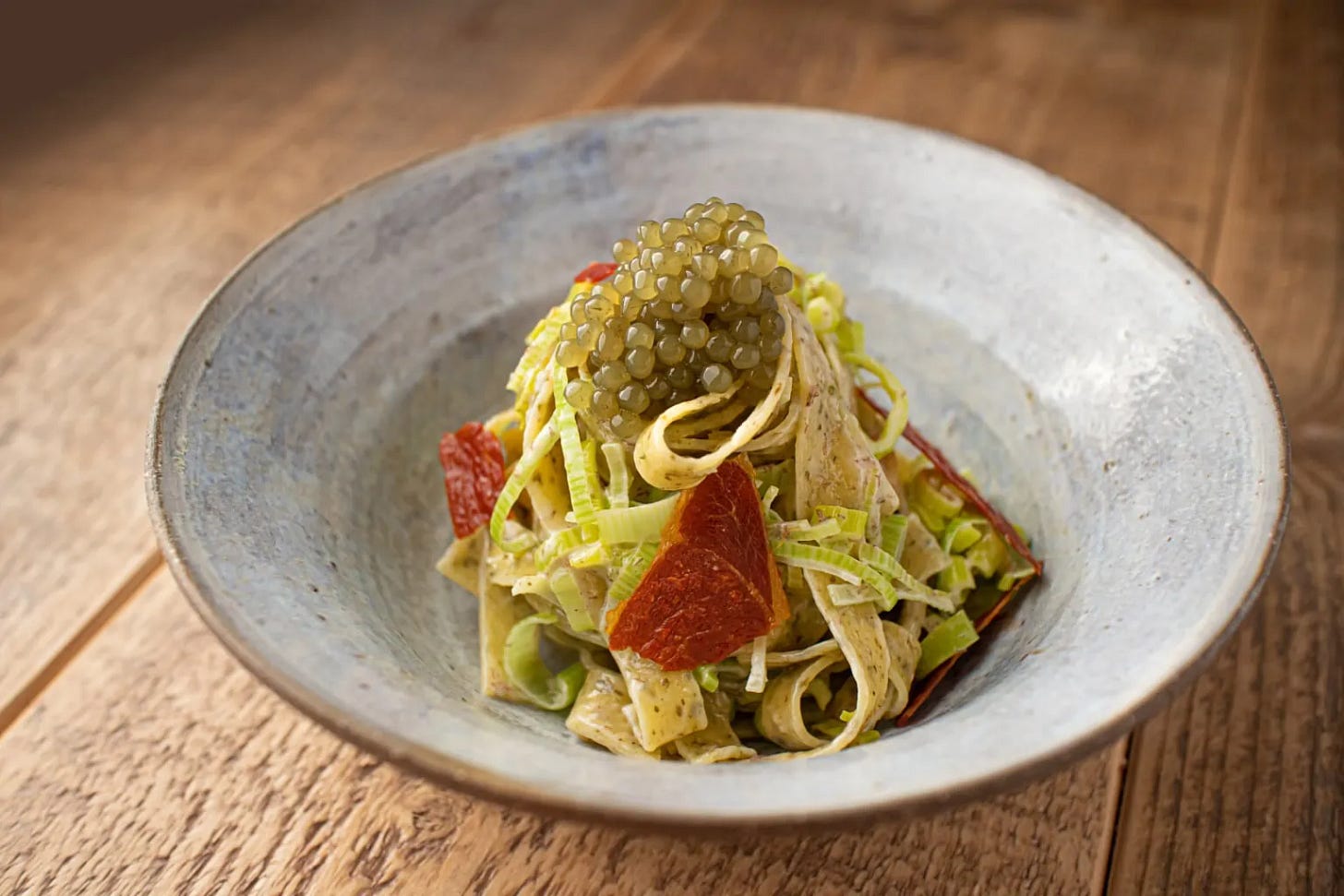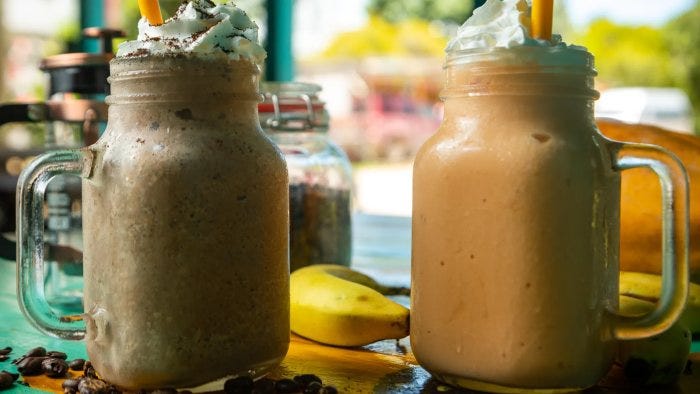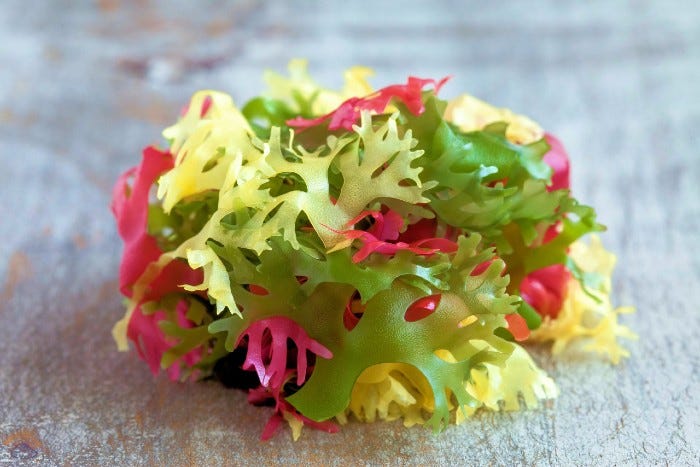While seaweeds have many applications, food is the most common one globally. More importantly, in Europe and North America, food is a market that is both high-value and potentially high-volume enough to drive profits and bring about larger-scale seaweed production, while the industry figures out how to lower the cost of farmed seaweeds to open high-volume, low-margin markets like chemicals and bioplastics.
But the food market for local seaweeds still needs to be created. While the US for instance imports 16 million pounds (7250 tons) of dried seaweed products, mainly for human consumption, most of it is not sugar kelp, the country’s dominant homegrown crop. The recent history of quinoa and avocado shows that an unfamiliar ingredient can quickly take off if the conditions are right. So how can local seaweed crops become the new avocados?

Marketing
According to a survey by Davis et al. among US consumers, a sizable segment of the population wants to add more seaweeds to their diet, but doesn’t know how. Recipe ideas are the number one thing that would encourage them to eat (more) seaweeds, followed by easy-to-use products and increased availability.
Of course, a quick internet search will already yield a bounty of options (just look at the delicious recipe pages from Mara, Cornish Seaweed, Pacific Harvest, Lofoten Seaweed or Nordic Seafarm, to name a few); but clearly, there is a need for more instruction. While the kelp equivalent of avo on toast has probably already been cooked up, it hasn’t come up frequently enough in people’s Instagram feeds.
Other marketing tips the survey reveals: the term sea vegetables is preferred by some, and locally-grown seaweeds are perceived as the highest quality, so put a Made in USA sticker on it. Marketers can delve into the details of the study further here.

Taste
Taste, of course, remains of the essence. Although a furtive glance at their actual eating habits might convince you otherwise, British consumers are adamant that taste is important to them. Recent UK research thus recommends including more taste-focused language on packaging (delicious, warm, rich) and (once again) providing recipe ideas.
As umami is very prominent in algae, any marketing strategy should utter the word as often as possible, mainly because it makes you sound more sophisticated than you actually are. More importantly, though, Valgorize’s work on understanding algae umami has revealed the complexity of the taste, involving various amino acids and nucleotides, and how the umami profile changes depending on cultivation conditions, harvest time and drying temperature.

Whole leaf or processed?
If locally-grown edible seaweeds will be more available in the near future, will that be mostly as a lightly processed ingredient for home cooking (dried whole leaf, salads, condiments) or instead as a hero ingredient in seaweed snacks, alt-proteins and ready meals?

Looking at the product focus of some 60 seaweed food startups in Europe, the Americas and Oceania, it seems like seaweed consumption outside Asia is shaping up to be a mix of both.
Finally, the longstanding success of Acadian Seaplants' colorful Hana Tsunomata range in Japan points the way to a third option, where seaweed production in emerging geographies is not powered by local consumption, but instead by export to Asian foodies looking for exotic new flavors.
Tropical flavors
Pushing local seaweed consumption can boost farmer profits, reduce nutrient deficiencies and help the transition to sustainable food systems. This is true not only for Europe and North America. In recent conversations with people in Kenya and Senegal, a lack of markets was seen as the main reason the seaweed industry hadn’t gotten off the ground there yet.
In Zanzibar (and increasingly mainland Tanzania), there is already an industry producing Eucheumatoids for the carrageenan industry, but growers feel they are being underpaid, pressured on price by an oligopsony of powerful multinationals.
Here too, reimagining seaweeds as whole foods rather than just squeezing them for gel can boost producers’ bargaining power and ultimately expand the industry, regardless of the ultimate destination market: sea moss in the US, gourmet salads in Korea or beach smoothies for home consumption.





Interesting article. My experience is people are still nervous about seaweed - what to do with it and what it might taste like. We make food seasonings with seaweed allowing people to use it in their everyday cooking without need for a special recipe or other fancy ingredients. It's a starting point and an opportunity to increase their curiosity and tastebuds.